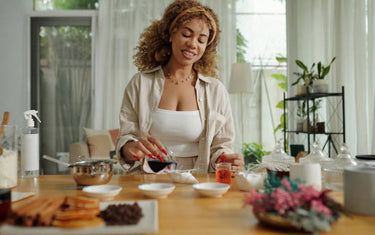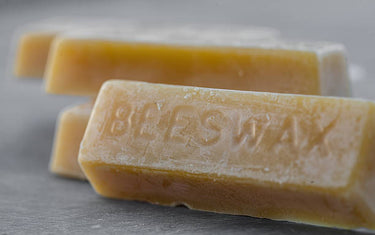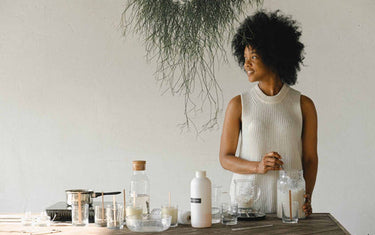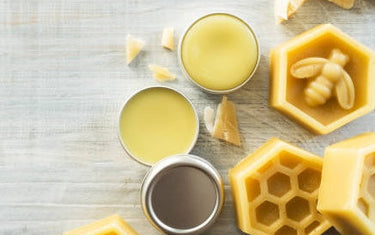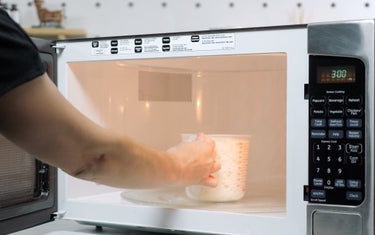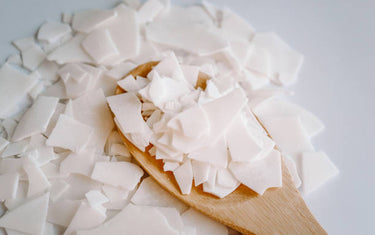5 min read / 22 February 2023 / Laura Garvin Gomez
How to Dilute Tea Tree Oil
Discover the proper techniques and benefits of diluting tea tree oil for safe and effective use in your daily routine with our helpful guide.

Tea tree oil remains one of the most enduring essential oils around today, helping people to manage skin conditions such as acne and cold sores while being used to reduce skin inflammation and fight off common colds.
However, like many essential oils, tea tree is a very potent oil that needs to be applied carefully, so to help you get the most out of it, we explain how to dilute tea tree oil, what it can be used for, and much more.
What is tea tree oil?Tea tree oil is extracted from the leaves of the tea tree – which is a different tree from the tea plant used to make black and green tea. The tree was first discovered by the West in Queensland and New South Wales, Australia, and before their arrival, the oil had long been used by the native people of the country for centuries. It has since found use as a remedy for a host of ailments, helping to treat things like dandruff, skin problems and coughs and colds. |
What can tea tree oil be used for?
Tea tree is a highly versatile oil that can be used in several ways, with some of the most coming being:
- As an antiseptic: If you experience an injury that breaks the skin, you need to prevent germs from entering your bloodstream and causing an infection. You can use diluted tea tree oil to treat and disinfect minor cuts by killing off bacteria.
- For improving wound healing: Tea tree oil contains antibacterial, antifungal and antioxidant properties that can reduce inflammation and improve wound healing. Add diluted tea tree oil to a wound dressing every time it is changed to help it heal faster.
- To combat acne: Not all traditional antibiotics work well against acne caused by bacteria. Applying diluted tea tree oil to the affected areas of the skin could help to reduce its appearance, as one scientific study discovered. [1]
- Helping to reduce skin inflammation: Contact dermatitis is a common form of skin irritation that occurs when the skin interacts with an allergen. Depending on the severity, it can cause the skin to be red, itchy or even painful to touch. Adding diluted tea tree oil to the skin can ease the reaction by reducing inflammation.
- Treating colds and congestion: Many people believe the powerful properties of tea tree oil can relieve congestion and treat low-level illnesses such as the common cold. Try using it for aromatherapy in an oil burner or diffuser, mixing it into a bath or including it in a candle recipe.

What is the best tea tree oil to use?
If you want to try tea tree oil to see if it can improve your skin or soothe an open wound, we recommend trying our tea tree essential oil.
Referred to by native Australians as ‘a medicine cabinet in a bottle’ it comes as no surprise that it has become a common ingredient found in an extensive range of cosmetic products.
Using the essential oil allows you to go straight to the source, and when mixed with a carrier oil it can help to heal all sorts of ailments, many of which we have covered in this article.
What is the best carrier oil to use with tea tree oil?
Tea tree essential oil has quite a strong and potent scent, so blending it with coconut oil can make it easier to use with your skin.
Coconut oil also has a host of benefits to offer whether used with or without tea tree essential oil.
It is packed with medium-chain triglycerides that can improve wellness by providing fatty acids.
Research has suggested that coconut oil can boost your metabolism and moisturise skin and hair.
How to dilute tea tree oil
The simplest way to dilute tea tree oil is with a carrier oil like coconut oil or almond oil.
Mix 2-3 tablespoons of carrier oil with 2-3 drops of tea tree oil.
Tea tree oil is completely safe to use provided it is diluted correctly with a carrier oil.
Of course, not everyone’s skin reacts in the same way, so before you use large amounts of the oil on your body, you should carry out a patch test to ensure it is accepted.
- Do a patch test: Simply add a very small amount to the inside of your forearm and cover it with a plaster for 24 hours. If you notice any redness, inflammation or itchiness, wash the oil off right away.
- After 24 hours, if you have not experienced an allergic reaction, you can start to use the oil more freely.
- No more than 3% of your oil mixture should be tea tree oil, with 97% of it made up of the carrier oil.
- Even if you have not had an allergic reaction during the patch test you should not add more than this amount as it could cause skin sensitivity.
How do I dilute tea tree oil with water?
Another great way to enjoy the benefits of tea tree is to add it to a nice warm bath so it can naturally absorb into your skin.
To do this you will need to dilute the tea tree oil with a carrier oil to avoid it creating a negative reaction.
Essential oils and water do not mix well together by themselves, as the oil will just sit on top of the water and absorb directly into the skin, which can cause sensitivity issues.
You can avoid this happening by using the same 3% dilution method described above before adding it to your warm bath.
The only other thing to be aware of is that carrier oils tend to make the bath quite slippery, so take care getting in and out.
You should also wash the bath down with a cleaner once it has been emptied to ensure it is safe for the next person to use.

Whether you are diluting tea tree oil for use on your skin or mixing it with a carrier oil to blend with bath water, tea tree oil can add a lot to your daily routine.
Many people also use the oil in soap and candle recipes or as part of a potpourri mixture to further enhance the scent.
Always carry out a patch test before using the oil for the first time, and then you should be able to discover why it has remained a go-to oil for so many for so long.
|
Product Name |
100% Pure Tea Tree Essential Oil |
| Botanical Name | Melaleuca Alternifolia |
| Scent Type | Fresh |
| Benefits & Uses | Decongestant, Skin, Antibacterial |
| Suitable for Diffusers? | Yes, this tea tree essential oil is perfect for diffusers. |
| Suitable for Candles and Soaps? | Yes, this tea tree essential oil is perfect for candle and soap making. |
| Extraction Method | Steam Distillation |
| Bottle Type | Tamper proof and UV resistant |
References
[1] Ahmed Esmael et al. (2020) Antimicrobial activity of certain natural-based plant oils against the antibiotic-resistant acne bacteria https://www.sciencedirect.com/science/article/pii/S1319562X19302414




